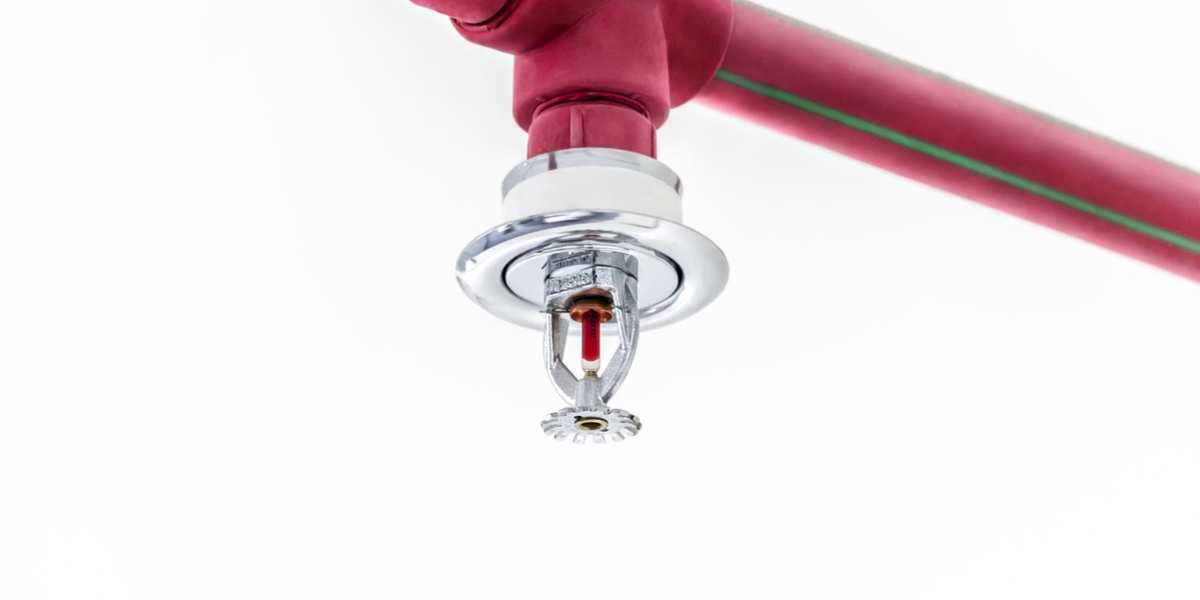Sprinkler System Installation: 6 Common Mistakes

Buildings systems may suffer from poor performance due to installation mistakes, but in the case of fire sprinklers this can be deadly. New York City has some of the most demanding fire protection codes in the world: if your sprinkler system has mistakes, they will most likely be detected during inspections before the building can start operating. However, corrections can be very expensive when dealing with sprinkler systems, and it is in your best interest to avoid them in the first place.
The best way to prevent installation errors is to hire professional services from the start of the project design phase. Also ask for supervision services to ensure everything is installed according to the approved design documents. If you are installing a sprinkler system to meet Local Law 26 in a large building, there is little space for error: the deadline for compliance is less than two years away (July 1, 2019) and these projects can consume a lot of time.
This article will provide an overview of some common mistakes when installing sprinkler systems. You should not have to worry about them if you are working with qualified professionals, but some extra technical knowledge never hurts!
1) Incorrect Piping Diameter
Installing building systems according to “rules of thumb” is tempting because it seems easy, but this practice often leads to chronic performance issues. In the case of sprinkler systems, these rules of thumb lead to dysfunctional systems that cannot provide adequate fire protection.
In order for a sprinkler system to operate correctly, the pressure and flowrate must be according to manufacturer requirements and also according to any applicable fire protection codes. Undersized piping leads to insufficient flow, while oversized piping leads to excessive pressure. At the end of the day, there is no substitute for a detailed calculation procedure by a qualified design professional.
2) Changing the Sprinkler Model in Design Documents
Sprinklers models are not like light bulbs, which allow you to switch brands without limitation. Each model of sprinkler has operating parameters that are considered when calculating piping, pressure and flow rate, and the installation will not operate as intended if the sprinkler model is changed.
Switching sprinklers can be very tempting for contractors if a similar model offers a lower price. Before the project contract is signed, you can add a clause that requires the contractor to use the exact sprinkler model specified in design documents.
3) Installing Wall Sprinklers Too Close to the Ceiling
There is a misconception that wall sprinklers provide better protection when placed as high as possible in a wall. However, they are designed for a specific mounting height, and their spray pattern is disrupted by the ceiling if they are installed higher. In other words, installing wall sprinklers too close to the ceiling is actually detrimental for their performance.
4) Installing Sprinklers Above Obstructions
Many times, sprinkler systems are designed based on an empty layout of the room they protect. However, the resulting spray pattern can be disrupted by furniture or decoration. For example, if a tall file cabinet is installed right under a sprinkler, plenty of sprayed water will hit the top of the cabinet and will not reach the intended location. Vertical office divisions can have the same effect on sprinkler spray patterns.
To make sure that spray patterns are not blocked, establish communication between sprinkler system designers, architects and interior designers. This way it is possible to optimize coverage with the smallest number of sprinkler heads possible, while also accounting for obstacles that may not be evident during the design phase.
5) Adding Valves Not Allowed by Codes
A valve may seem like a harmless piece of equipment. If a valve is closed accidentally in a plumbing installation, the worst that can happen is blocking the water supply to all plumbing fixtures downstream, and the issue will be evident immediately. However, the risks are far higher in sprinkler systems:
- Closed valves are not evident because sprinklers only activate during emergencies.
- If a fire starts, it may be too late to open the valve.
For this reason, building codes prohibit the arbitrary use of valves that cut the water supply for sprinkler systems, totally or partially. Valves may be allowed in cases where plumbing fixtures and sprinklers share a water supply, because the effects are evident if a valve is closed accidentally.
If the water supply of a sprinkler system is cut accidentally by a valve that should not have been installed in the first place, fire can spread without control.
6) Misunderstanding Local Law 26 Requirements
Installing a sprinkler system for a large building can be a very expensive project. If you are carrying out the project to meet Local Law 26, first make sure your property is covered. Less expensive fire protection systems are available if your building is not under the scope of LL26. Keep in mind that the opposite may also apply: perhaps LL26 covers your building and you are unaware? In both cases, the best recommendation is to seek professional advice.

Michael Tobias
Michael Tobias, the Founding Principal of NY Engineers, currently leads a team of 50+ MEP/FP engineers and has led over 1,000 projects in the US
Join 15,000+ Fellow Architects and Contractors
Get expert engineering tips straight to your inbox. Subscribe to the NY Engineers Blog below.


